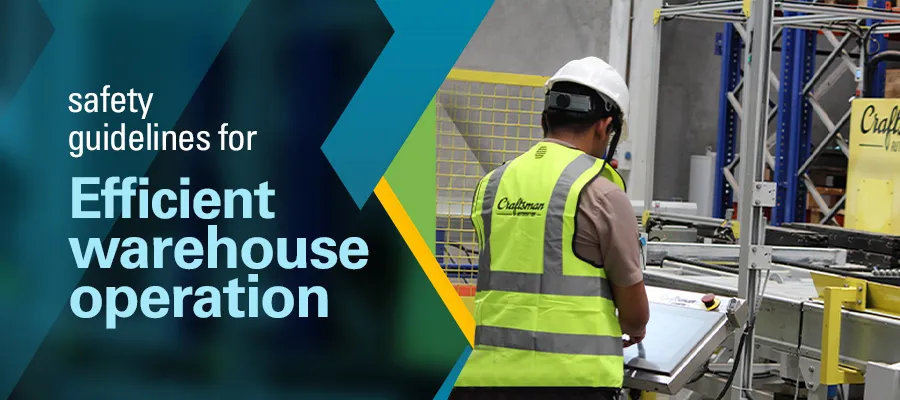Harnessing Efficiency: Warehouse Automation in the Solar Energy Revolution
In today's rapidly advancing world, the solar energy sector stands at the forefront of sustainable innovation.
Read More
Understanding typical workplace injuries and what causes them is the first step toward improving warehouse safety. The most common causes of these injuries are as follows:
Heavy Equipment Mishaps
Forklifts are essential pieces of equipment in warehouses and storage facilities. When used inappropriately can cause serious harm to operators, neighboring personnel, and property. OSHA’s most often identified hazard in warehouse operations is unsafe forklift operation. The following can be done to avoid the same,
Back stoppers, column guards, and row guards, when Installed at their dedicated positions can absorb any hit that occurred during the operator’s error to safeguard racks.
Guide rails can be used to prevent the forklift or MHE from exceeding permissible limits.
Ascertain that all forklift operators are competent and have received certified training. When an operator is spotted dangerously operating the vehicle, regular refresher training and evaluation are required.
Always make sure that there are warning signs and procedures in place to keep people away from docks.
Conveyors
The Conveyor equipment is widely used to transport items from one location to another. Conveyors, on the other hand, pose major hazards to workers while operating closer to them and being struck by falling materials.
Ensure that suitable safety equipment is installed between the conveyor and the worker to prevent clothing, body parts, and hair from being entangled.
During conveyor maintenance and repairs, use strict lockout/Tagout protocols.
The use of a driving system and presence of detection systems enabled by mechanical or optical sensors allow boxes to be moved under controlled conditions.
Chemicals that are hazardous
An awareness program should be created when handling hazardous substances in your warehouse or storage facility that should include effective training on detecting chemical dangers, as well as correct chemical handling, storage, and disposal, as well as the use of suitable PPE (personal protective equipment) like overalls, aprons, safety shoes, gloves, chemical resistant glasses, face shields, and respirators. To maintain warehouse safety, workers and management teams must be aware of doing improved safety inspections as well as proper handling and storing of hazardous materials.
Manual lifting and moving
Improper lifting and handling are the leading cause of physical injuries in warehouses and storage facilities. Failure to adhere to basic procedures might result in muscle spasms, especially if performed in uncomfortable postures, repetitive actions, or overexertion. Warehouse safety can be assured during physical lifting or handling by completing the following:
Plan ahead of time to see if the demand for lifting can be reduced by using sound technical design procedures like Light Crane Systems.
When carrying or shifting loads, maintain correct ergonomic posture. Heavier items should be lifted only with cranes and moved with the help of trolleys